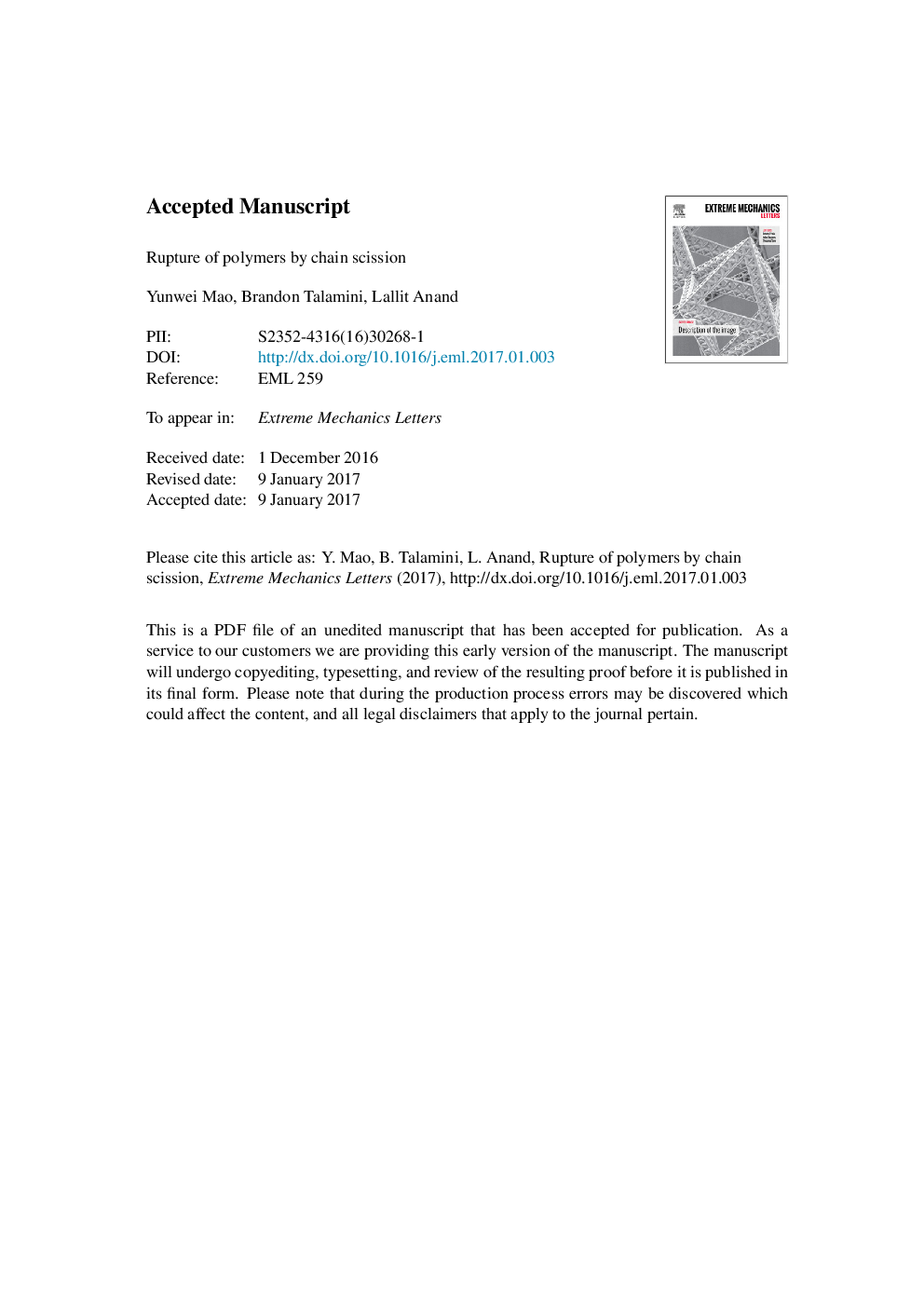| Article ID | Journal | Published Year | Pages | File Type |
|---|---|---|---|---|
| 5014499 | Extreme Mechanics Letters | 2017 | 15 Pages |
Abstract
One of the distinguishing features of elastomeric materials, which consist of a network of flexible polymeric chains, is that the deformation response is dominated by changes in entropy. Accordingly, most classical theories of rubber-like elasticity consider only the entropy and neglect any changes in internal energy. On the other hand, the fracture of strongly cross-linked elastomers is essentially energy dominated, as argued in the well-known Lake-Thomas model for the toughness of elastomers. However, a single model unifying these two phenomena is still lacking. We provide a rational yet simple model for deformation and fracture of cross-linked polymers, based on two ingredients: (i) a non-Gaussian statistical mechanics model of polymer chains that accounts for the increase in energy due to the deformation of molecular bonds; (ii) a chain scission criterion based on the bond deformation energy attaining a critical value. Using this model, we can estimate the rupture stretch of elastomeric materials from fundamental quantities describing the polymer network. We use this model to relate the flaw sensitivity of elastomers to an intrinsic material length scale related to the network structure.
Keywords
Related Topics
Physical Sciences and Engineering
Energy
Energy Engineering and Power Technology
Authors
Yunwei Mao, Brandon Talamini, Lallit Anand,
